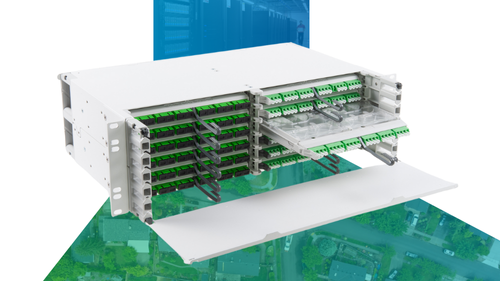 With all the hype around 5G wireless, we tend to forget that wireline networks make 5G possible, as well as delivering broadband services to tens of millions of customers around the world. Residential customers, business customers, and 5G base stations and small cells all rely primarily on fiber-based connectivity. In 2020, service providers will explore new ways to drive their networks closer to the edge. Just like in the wireless space there are three key trends surrounding this change:
With all the hype around 5G wireless, we tend to forget that wireline networks make 5G possible, as well as delivering broadband services to tens of millions of customers around the world. Residential customers, business customers, and 5G base stations and small cells all rely primarily on fiber-based connectivity. In 2020, service providers will explore new ways to drive their networks closer to the edge. Just like in the wireless space there are three key trends surrounding this change:
- Coverage
- Efficacy
- Capacity
Coverage: Closing the Digital Divide, and Addressing more Applications
Outside the United States we see a push toward fiber deployments for residential and business services along with servicing wireless backhaul. The focus is on efficient deployment of fiber, and customers are looking for the most cost-effective ways to service the broad application range in the future. In the United States, two strategies are being employed to address the need for bandwidth growth and increasing applications. MSOs are building on their HFC network with extended spectrum DOCSIS and Remote Phy. Telcos are looking to find ways to leverage existing fiber networks or find ways to build new fiber plant to address the demand for access and bandwidth.
CLICK TO TWEET: CommScope's Ric Johnsen explains why service providers will explore new ways to drive their networks closer to the edge.
One of the things we’re seeing is a continued push toward fiber-based networks in Europe. We’re seeing a lot of additional drive toward fiber-rich networks, typically passive optical networks (PON), for residential and business services as well as preparation for 5G backhaul. Service providers want to level the playing field, eliminate the digital divide and provide access to all of their customers, and they need to use new technologies like XGS-PON and wave division multiplexing (WDM) to get more out of existing networks.
Government mandates and programs are one of the factors driving expanded broadband services. Whether these are pan-European programs, national programs (as in France or the United Kingdom), or state or municipal programs, many government agencies have established programs aimed at closing the digital divide and bringing broadband to all of their citizens. As fiber-to--the-home programs have already covered most urban areas in several countries, the focus is shifting towards less populated rural areas.
These efforts are undertaken by incumbent service providers and their direct challengers, but we also see a rise of “alternative network operators,” often with a “wholesale only” approach. Increasingly supported by private investors who value the simplicity and visibility of this model, these new players are contributing to the dynamic of the FTTH market in many European countries in particular.
Efficacy: Converging networks to drive better use of assets
The next generation of wireless network requires a density of fronthaul/backhaul connections akin to a FTTN network. Fixed wireless networks are even denser. This is driving the need and opportunity for efficiency by managing the physical plant as one, regardless of whether it serves wireline or wireless services. The need for power and mounting locations also adds to the need and opportunity for a single network. We have seen operators start to change management models to accommodate this type of network; they have started to shift the designs and the requirements of the products that service both central offices and head ends and the outside plant.
Operators as well as neutral hosts are moving toward operating one network for broadband and 5G wireless. In practice, this means bringing more broadband to the edges of the network where it can serve individual subscribers as well as 5G base stations and small cells. Service providers are beginning to treat the entire network as one cohesive entity.
Capacity: New technologies to drive more bandwidth
Service providers recognize that they must bring more bandwidth to more endpoints in their networks in order to support expanded broadband access as well as 5G services, but they don’t always want to dig new trenches or string new overhead fiber. In 2020, providers will increase their use of bandwidth-stretching technologies like WDM, higher-speed PON technologies like XGS-PON, NGPON2, or using high-speed transmission technologies like 10-gigabit Ethernet backhaul with edge distribution switches.
So, in 2020 we’ll see a drive toward broadening access to broadband and wireless services, which will entail the use of edge networking techniques like next-generation PON as well as Ethernet, and using new technologies to get more bandwidth out of existing network infrastructure. Service providers will build up their edge networking capabilities and will continue the trend toward converging wireless and wireline networks to improve efficiency.














